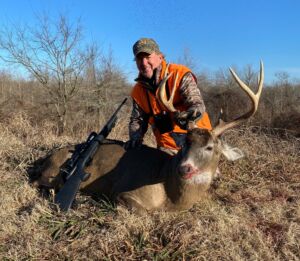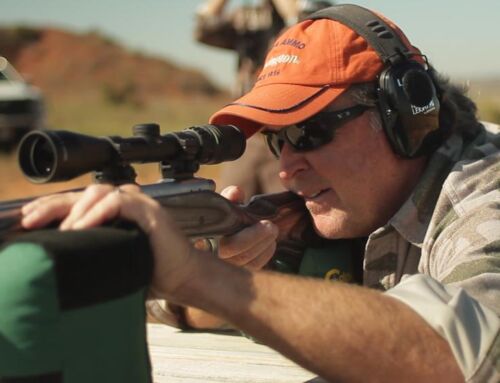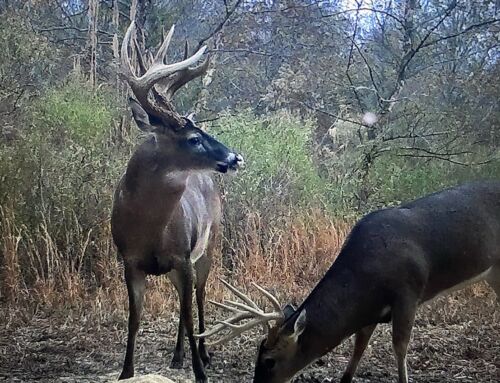 Here’s your practical and affordable way to get into the land leasing game—and shoot more and bigger bucks.
Here’s your practical and affordable way to get into the land leasing game—and shoot more and bigger bucks.
My old college buddy Dave hunts a 22-acre brush-and-briar thicket within walking distance of his house in Kentucky. “Nobody else hunted that spot, but I figured it is close to the house, so I’ll ask permission and try it if I can,” he said.
Dave got the okay from the landowner, and he has hunted the spot for the last several years. In October he sees mostly does, and the bucks came in November, piling into the cover to breed the does and to flee the booming guns on surrounding lands. The first season he hunted the place, Dave saw 4 shooters in two days and nailed a 140-class 8-pointer. He went straight to the landowner and offered him an annual $800 lease fee for exclusive hunting rights. The owner jumped on the easy money, and for Dave it has been a bargain. He pulls his buck and a couple of does out of the thicket every season.
Locate a Small Spot
It might be a mix of oaks/honeysuckle behind a shopping center …a remnant corner of an old farm carved into building lots…a cattail swamp that borders a new golf course… Big deer hide in all sorts of nooks and crannies. If you and maybe one buddy can get the leased hunting rights to 25 to maybe 100 acres in a good whitetail area, chances are it will be a good investment.
Scan aerial photographs of your county and adjoining counties on the OnX app. Drop pins on spots that intrigue you—i.e., a woodlot near a corn or soybean field, a block of white oaks or a creek drainage pocked with cover. Mark places where you’ve repeatedly spotted bucks as you drove to work or to 7-Eleven. Keep your ears open. An estate caretaker or the UPS guy might tell you about the big deer he’s been seeing near a spot you’ve got your eye on.
Find the landowners on a phone app, or visit the county courthouse and check plats to confirm who owns good-looking land. Start knocking on doors. Some people won’t let you hunt. No biggie, move on. Be persistent and you’ll find a spot, especially in a deer-thick area where the animals are hammering a landowner’s crops or azaleas.
To seal the deal, offer a reasonable lease fee of, say, $30 to $40 an acre for the exclusive hunting rights to the small property. Depending on where the land is located, the average hunting lease price per acre fluctuates widely. In some high-quality buck areas, farmers may lease smaller properties for the relatively high price of $30 to $40/acre, while lower-quality ground will get less. Ask around and try to obtain a few comparable lease listings in your area to help you decide what a reasonable price per acre should be.
The Right Acres
The simple truth is that most any tract with decent habitat in the East or Midwest will hold a few or a bunch of whitetails. But if you research diligently and find 50 to 100 acres either surrounded by larger rural properties with deer-management plans, or by private estates in a suburb that allow no hunting you’ve dug up a top opportunity. In either case, the controlled access and lack of pressure on bordering lands will make your hunting all the better. Mature bucks with 140- to maybe even 160-inch racks will bump off those large properties and move through your lease once in a while. If you’re in the right stand at the right time, boom you score big. Offer top dollar to rent the rights to a gem like that.
How to Hunt a Small Lease
Now for the fun part this fall. To me, a small property is actually more fun and manageable to hunt than a large chunk of ground you have to share with strangers. You can scout and hunt when and where you please without worry of bumping into other people. (On that note, consult with the landowner and post your lease keep trespassers out.) For the best hunting on a 25-80-acre property, keep these things in mind:
- Scout for ridges, creeks, edges and main trails that lead onto and off your spot. Since your lease is small, you are hunting mostly transient bucks that roam those funnels and trails.
- Hang 4 tree stands (or set blinds) in those travel corridors where the wind and access are good. Try to sneak in and out each day without spooking a single deer. Think light pressure.
- Stand-hunt 90% of the time and keep walking/stalking to a minimum. On small acreage it’s better to let deer come to you.
- Bowhunt early, but know that the rut, when mature bucks prowl those funnels and trails, is the second best time to hunt your spot.
- The best week is when rifles or slug guns start booming on surrounding properties in November or December. Sneak into your stands and watch for deer running on those funnels and trails, diving for cover on your lease, which has become a sanctuary because you’ve hunted smartly with low-pressure. You just might shoot a whopper 8- or 10-pointer get your money’s worth.





